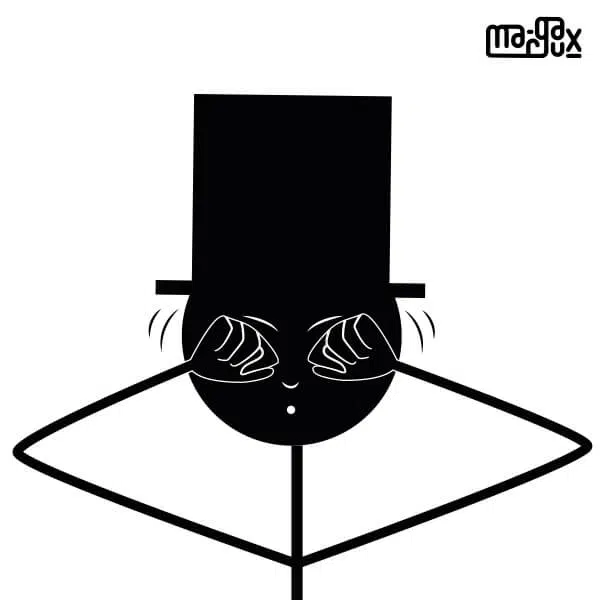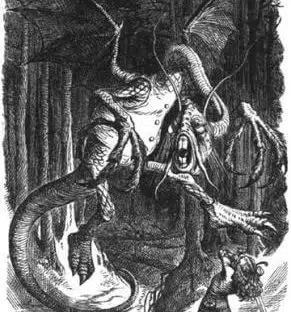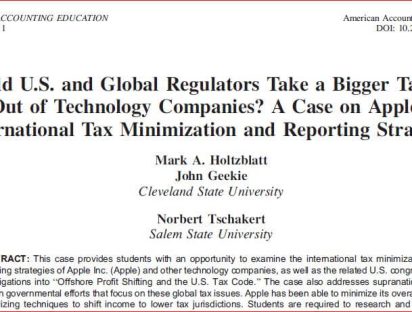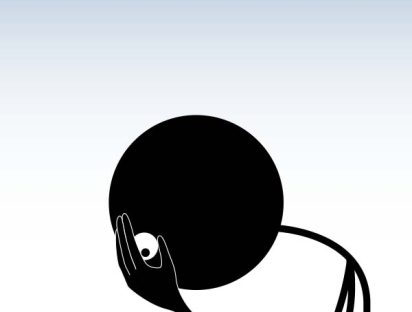 The phrase It’s too good to be true is often used. This has been the case recently, at least in its English and French versions (Trop beau pour être vrai) (1). Expressing “doubt or mistrust in the presence of a happy event,” according to the Dictionnaire de l’Académie française, it seems unambiguous. However, it poses a logical problem that cannot be solved so easily.
The phrase It’s too good to be true is often used. This has been the case recently, at least in its English and French versions (Trop beau pour être vrai) (1). Expressing “doubt or mistrust in the presence of a happy event,” according to the Dictionnaire de l’Académie française, it seems unambiguous. However, it poses a logical problem that cannot be solved so easily.
1. Definitions
The different definitions of the phrase It’s too good to be true cover the intuitive meaning given to it by ordinary psychology. According to the French CNRTL’s Vrai article (true), “Trop beau pour être vrai expresses doubt about the credibility of news that is too pleasant or unexpected” or “about the reliability of a discovery that is too easy.” For its part, the French Dictionnaire des expressions et locutions by Alain Rey and Sophie Chantreau defines the expression not in the article Vrai, but in the article Beau (here equivalent to good). However, its content is almost identical to that of the CNRTL:
“It is said to cast doubt on pleasant and unexpected news” (2).
English-language dictionaries also give weight to the criteria of pleasant and unexpected in their definition of Too good to be true. This is particularly the case for the Collins dictionary, which, however, prefers the comparative better to the adjectives pleasant or happy:
“If you say that something seems too good to be true, you are suspicious of it because it seems better than you had expected, and you think there may something wrong with it that you have not noticed.”
The Cambridge Dictionary’s succinct definition does not refer to the expectations of the person concerned, only to his or her difficulty in accepting a fact because of his or her appearance:
“So good that it is hard to believe, or seeming very good but not real.”
The same is true of the Merriam Webster:
“Used to say that something cannot be as good as it seems to be.”
The expression Too good to be true applies to all areas of human life. The title of this French blog post, published in 2009:
“If it’s too good to be true, it’s probably not true,”
was concerned with finance. The same sentence was cited as an example in Jennifer Speake’s Dictionary of Proverbs (3). The context is also that of finance, but the quotation contains a touch of irony:
“I’m sure you’ve heard the expression, ‘If something sounds too good to be true, it probably is.’ Well, in the investment world, I say, ‘If something sounds too good to be true, it definitely is.’”
Three observations about the book from which this quotation is taken. First, it is neither Good nor True, but Sound. Sound is a sort of golden mean, reflecting the appearances revealed by the expression Too good to be true. That’s why Speake rightly classifies it in the category of “reality and illusion.”
Second observation: the fact that Too good to be true is considered a proverb, whereas the French dictionaries of proverbs or commonplaces that we consulted do not refer to it (4). However, the French expression Trop beau pour être vrai could, at first sight, claim this status if we consider the definition of a proverb given by the Grand Larousse de la langue française: “A short sentence, often elliptical and colourful, which contains the statement of a truth of experience or a piece of practical wisdom, and which has become common usage” (5). Unless it is a proverbial expression in the sense that it has the appearance of a proverb (6). We shall return to this point in the third section.
Our final observation is that, in contrast to previous definitions, Speake’s definition emphasises the function of the expression Too good to be true:
“[It is] used especially as a warning to be in your guard against being taken in by the extravagant claims of salespeople or scammers.”
We will also come back to this in the third section.
2. The Problem
Apart from the question of its status, the phrase It’s too good to be true does not seem to raise any problems. Is it not a product of popular wisdom, whose function is to warn against false appearances? And this warning is unambiguous.
However, the structure of It’s too good to be true contains an apparent logical problem. To analyse it, we consider here the French expression Trop beau pour être vrai, within which we discuss the relationship between beau (good in English, but corresponding literally to beautiful) and vrai (true). The apparent logical problem can be expressed through these propositions:
(a) If beau is the sensitive dimension of vrai.
(b) If trop beau (too good) remains beau.
(c) Then the sentence Trop beau pour être vrai contradicts itself.
Let us consider a justification for premise (a). We know the importance, in philosophy, of the fundamental concepts of bien (good), vrai (true) and beau (beautiful). In Trop beau pour être vrai, two of these three concepts are related, beau and vrai. However, the beau can be conceived as the expression of the vrai in reality (7). “Beauty is one way in which truth essentially occurs as unconcealment,” Martin Heidegger wrote (8). We find the same relationship in Marie-Pauline Martin’s non-philosophical commentary on the frontispiece at the head of Diderot and d’Alembert’s Encyclopaedia:
“Thus the frontispiece crystallises, in an image, an age-old reflection according to which beauty is measured by its capacity to reveal the true.” (9)
Let us move on to premise (b). The idea that trop beau is still beau was defended by George Eliot in a letter of 1848. One sentence, in particular, is quoted in the Oxford English Dictionary. Eliot denounced the discrepancy between the beau and the vrai contained in the expression Trop beau pour être vrai:
“There is a sort of blasphemy in that proverbial phrase, ‘Too good to be true.’” (10)
The trop beau, which is applied here to the soul of a man whom George Eliot admired, cannot outrage the vrai (11). No doubt she judged that the trop beau had the value of the sublime, considered here as the supreme degree of the beautiful. Herein lies the weakness of argument (a)-(b)-(c), whose conclusion that trop beau is a logical contradiction. The problem is that trop beau cannot be compared to the sublime. In Trop beau pour être vrai, trop beau must be understood in the light of this remark by the French philosopher Emile Bréhier:
“In fact, beau is often used in everyday language, outside the strictly aesthetic field.” (12).
It is the Dictionnaire historique de la langue française Le Robert that best expresses the meaning of the adjective beau in Trop beau pour être vrai:
“By confusing quality and quantity, beau qualifies something of importance and marks intensity, size, greatness.” (13)
3. What is the status of Too good to be true?
This simple argument is enough. It closes the problem of self-contradiction. It is useless to try to answer it by remaining in the aesthetic field, for example by invoking the ambivalence of the beau in order to show that it can be opposed to the vrai – for example by quoting the first part of this verse from Proverbs: “Charm is deceptive, and beauty is fleeting” or the twenty-first poem of Charles Baudelaire’s Les Fleurs du mal, The Hymn to Beauty (14).
Despite its closeness to the vrai, the beau in Trop beau pour être vrai has no aesthetic value. Its only value is intensive and utilitarian. In reality, it is not the beau that is the object of this value, but the vrai. So, without changing its meaning, the expression could be replaced by Trop vrai pour être vrai (Too true to be true). One last remark. Too good to be true is a cautionary remark in the sense that Adam Smith meant it:
“Security […] is the first and the principal object of prudence. It is averse to expose our health, our fortune, our rank, or reputation, to any sort of hazard.” (15)
Because it falls within the realm of prudence, Too good to be true is applicable to a type of situation falling within the domain of this virtue. Perhaps this simple fact would allow, after linguistic analysis, to classify it as a proverb. For our part, we believe that it is a rule of thumb that emanates from prudence – a rule of thumb being “a rough and practical approach, based on experience, rather than a scientific or precise one based on theory” (16). This is enough to qualify it as Too good to be true and, above all, to respect a principle of parsimony. As the saying goes: Enough is as good as a feast.
Alain Anquetil
(1) For example, as regards the health crisis related to Covid-19. See “Un déconfinement trop rapide ? Plusieurs États font marche arrière aux USA: ‘C’était trop beau pour être vrai’,” RTL Belgique, 2 July 2020, and “Four travel stories that were too good to be true,” cnbc.com, 29 May 2020. (2) A. Rey et S. Chantreau, Le Dictionnaire des expressions et locutions, Paris, Le Robert, 1991. (3) J. Speake (following J. Simpson), The Oxford Dictionary of Proverbs, 6th edition, Oxford University Press, 2015. The quote is from the Washington Times, 3 June 1997. (4) We consulted, without success, the Dictionnaire des proverbes français by Pierre de la Mésangère, published in 1823, and the site proverbes-français.fr, where we identified twenty-two proverbs containing the adjective beau, among which only one associated the beau and the vrai: “Nothing is beautiful but the true, but not all true is beautiful.” However, there is a sentence that seems to be Too good to be true, but it is an assertion and not a proverb: “He tells me that his loneliness keeps him company. It’s too good to be untrue.” (5) Grand Larousse de la langue française, tome 5, Librairie Larousse, 1989. (6) But Too good to be true is not a cliché: it is not a “ready-made expression that has become commonplace with repetition.” (CNRTL). (7) In what follows, I greatly (and exaggeratedly) simplify the subject, in particular, and this is the least I can do, by confusing beauty with beauty. (8) M. Heidegger, Der Ursprung des Kunstwerkes, 1960, translated by David Farrell Krell, “The origin of the work of art,” Martin Heidegger: The Basic Writings, New York, Harper Collins, 2008. (9) Marie-Pauline Martin, “Décrire le système des arts, du Discours préliminaire (1750) au frontispice de l’Encyclopédie (1764) », Nouvelles de l’estampe, 2011, pp. 233-234. (10) George Eliot’s Life, Vol. I, J. W. Cross, The Project Gutenberg, 2013. (11) It is against this blasphemy that Eliot states the following sentence: “The highest inspiration of the purest, noblest human soul, is the nearest expression of the truth.” (12) A. Lalande, Vocabulaire technique et critique de la philosophie, Paris, PUF, 18th edition, 1996. (13) Dictionnaire historique de la langue française Le Robert, 4th edition, 2010. (14) Proverbs, 31.30, The Holy Bible, New International Version (NIV), Zondervan, 2011. The ambivalence of beauty appears in the first stanza of Charles Baudelaire’s poem (in Les fleurs du mal, Paris, Garnier-Flammarion, 1964, translated by R. Campbell, Poems of Baudelaire, New York, Pantheon Books, 1952):
Did you spring out of heaven or the abyss, Beauty? Your gaze infernal, yet divine, Spreads infamy and glory, grief and bliss, And therefore you can be compared to wine.
(15) A. Smith, Theory of Moral Sentiments, 1759, edited by D. D. Raphael and A. L. Macfie, Indianapolis, Liberty Fund. (16) Collins Dictionary. [cite]




